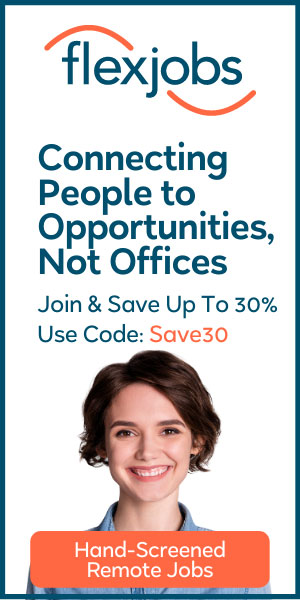
The shift to remote work has opened up new opportunities for UX professionals, allowing them to work on exciting projects from anywhere in the world. UX jobs remote have become increasingly popular, offering flexibility, autonomy, and the chance to work with top companies and innovative products. Whether you’re a seasoned UX designer or just starting out, remote UX design jobs can provide a fulfilling and challenging career path.
In this article, we’ll explore the world of online UX careers, including the benefits, challenges, and opportunities available to UX professionals working remotely.
Types of UX Jobs Available Remotely
The field of UX offers a wide range of job opportunities that can be done remotely. Some of the most in-demand UX design jobs remote include:
- UX Designer: responsible for creating user-centered design solutions for products and services
- Remote UX Researcher: conducts research to inform design decisions and improve user experience
- UX Writer: creates clear and concise content to help users interact with products and services
- Interaction Designer: designs interactive systems and products that are intuitive and user-friendly
- Information Architect: organizes and structures content to make it easily accessible and usable
These UX writing jobs online and other remote UX roles offer a chance to work on exciting projects, collaborate with global teams, and create products that make a real impact on people’s lives.
People Also Ask Questions
Many individuals are interested in pursuing UX jobs remote, but may have questions about the skills and requirements needed. Here are some answers to common questions:
| Question | Answer |
|---|---|
| What skills are required for remote UX jobs? | UX remote job skills such as user research, wireframing, prototyping, and usability testing. |
| How to find UX jobs remote? | Utilize job boards, professional networks, and company websites to search for remote UX job listings. |
| What are the remote UX job requirements? | A portfolio showcasing UX design skills, experience with design tools like Sketch or Figma, and strong communication skills. |
By understanding the skills and requirements needed for UX jobs remote, individuals can tailor their job search and develop the necessary skills to succeed in this field.
Benefits and Challenges of Remote UX Work
Working as a remote UX professional offers numerous benefits of remote UX work, including flexibility, autonomy, and the ability to work with global clients. Some of the key benefits include:
- Remote UX flexibility: work from anywhere, choose your own schedule, and balance work and personal life
- Increased productivity: without office distractions, many remote UX professionals find they can focus better and get more done
- Broader job opportunities: remote work allows UX professionals to work with clients and companies from all over the world
However, challenges of remote UX jobs include:
- Communication challenges: require strong communication skills to stay connected with team members and clients
- Self-motivation: require discipline and self-motivation to stay focused and productive while working remotely
- Technical challenges: require reliable technology and internet connection to ensure smooth workflow
By understanding the benefits and challenges of remote UX work, professionals can make informed decisions about their career path and develop strategies to overcome potential challenges.
How to Find UX Jobs Remote
Finding remote UX job opportunities requires a strategic approach. Here are some practical tips and resources to help you get started:
- Utilize remote UX job boards such as We Work Remotely, (link unavailable), and FlexJobs to search for UX job listings
- Leverage UX job search platforms like LinkedIn, Glassdoor, and Indeed to find remote UX job opportunities
- Network with other UX professionals through online communities, forums, and social media groups to learn about job opportunities
- Develop a strong online presence by creating a professional portfolio and LinkedIn profile
By following these tips and utilizing these resources, you can increase your chances of finding UX jobs remote that fit your skills and experience.
Tips for Success in Remote UX Jobs
Succeeding in remote UX jobs requires a combination of skills, strategies, and mindset. Here are some actionable remote UX job success tips to help you thrive:
- Effective communication: regular check-ins with team members and clients, clear and concise messaging, and active listening
- Time management: prioritize tasks, set realistic deadlines, and minimize distractions
- Self-motivation: establish a routine, set goals, and reward yourself for achievements
- Continuous learning: stay up-to-date with industry trends, best practices, and new tools
By following these tips, you can boost your UX remote work productivity and achieve success in your online UX career development. Additionally, consider investing in tools and resources that support remote work, such as project management software, time tracking apps, and online communities for UX professionals.
Conclusion
In conclusion, remote UX job opportunities offer a world of possibilities for professionals looking to break into the field or take their careers to the next level. By understanding the skills and requirements needed for remote UX work, individuals can tailor their job search and develop the necessary skills to succeed in this field. With the flexibility, autonomy, and global connectivity that comes with remote work, UX professionals can create products that make a real impact on people’s lives.
As you embark on your own remote UX journey, remember that it’s not just about finding a job – it’s about creating a fulfilling career that aligns with your passions and values. So, take the first step today by exploring remote UX job opportunities, networking with other professionals, and investing in your skills and knowledge. And don’t forget to share your own experiences and insights with us – we’d love to hear from you!
Whether you’re just starting out or looking to level up your career, the world of remote UX is waiting for you.


